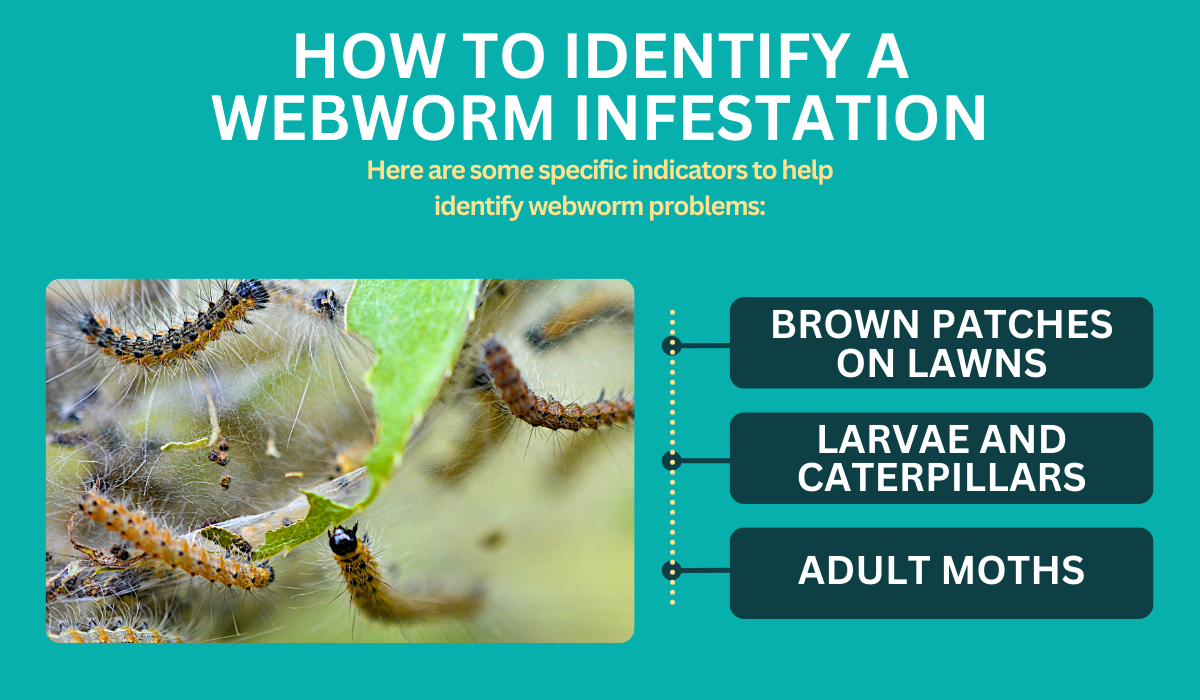How to Get Rid of Webworms in South Florida
Are sod webworms wreaking havoc on your South Florida lawn and garden? The best way to get rid of webworms in South Florida is by combining biological, chemical, and cultural controls.
These lawn pests can quickly damage large areas of your greenery, leaving a trail of unsightly webs and brown patches.
Interested in learning more about protecting your garden from these persistent lawn pests? Continue reading to find out the best methods to keep webworms at bay all season.
Key Takeaways
- Manually removing webworms is an effective and environmentally friendly method, best when done early in the infestations using tools like pruning shears and garden scissors.
- Encouraging birds, wasps, and beneficial insects like ladybugs and lacewings help naturally control webworm populations by maintaining a diverse garden.
- Regularly inspect your lawn for signs like brown patches, larvae, and adult moths to catch infestations early and prevent extensive damage.
How to Control Webworms
Various natural methods can effectively manage webworms in South Florida. These methods include manual removal, supporting natural predators, and using microbial insecticides.
Manual Removal
Manual removal of tropical sod webworms involves removing the pests by hand. It is most effective when caught early in the infestation cycle, preventing the spread to other parts of the plant.
To maintain a pest-free environment, consider the following for manual removal:
Tools | Pruning shears, garden scissors, gloves |
Best Times | Early morning or late evening |
Frequency | Weekly inspections |
Recommended Action | Use pruning shears to cut off the affected branches or webs. Inspect the tree regularly for signs of infestation. |
Natural Predators
Natural predators play a crucial role in controlling webworm populations.
To keep their numbers in check, essential predators that feed on these pests include:
- Birds: Various species, particularly those that nest in trees.
- Wasps: Parasitic wasps lay their eggs in webworms.
- Beneficial Insects: Ladybugs and lacewings.
Encourage and attract natural predators by maintaining a diverse garden with many flowering plants.
Yard Care Tips to Prevent Webworms
Effective webworm prevention in South Florida involves identifying infestations early, properly caring for trees, and consistently monitoring for signs of webworms. Here’s how to manage these aspects effectively.
How to Identify a Webworm Infestation

Identifying webworm infestations early is critical to preventing extensive damage. Here are some specific indicators to help identify webworm problems:
- Brown Patches on Lawns: Particularly noticeable in warm-season turf such as Bermudagrass, Zoysiagrass, St. Augustinegrass, Bahiagrass, and Centipedegrass.
- Larvae and Caterpillars: After the eggs hatch, sod webworm larvae and caterpillars are visible, especially on damaged turf.
- Adult Moths: Look for adult sod webworm moths flying low over the grass blades in late afternoons.
Proper Tree Care
Maintaining healthy trees and lawns can create an environment less conducive to these hairy pests. Here are effective tree and lawn care practices to control sod webworms:
Mowing: Mow regularly to keep lawn grass at optimal height and manage webworms.
Thatch Management: Reduce thatch build-up to minimize hiding spots for its larval stage.
Fertilization: Ensure proper fertilization for a healthy lawn that can resist sod webworm damage.
Monitoring and Early Detection
Unlike specific grubs and chinch bugs, webworms do not overwinter. Hence, year-round turfgrass monitoring can help detect webworm infestations early, allowing prompt action.
Crucial steps for effective monitoring and early detection include:
Steps | Details |
Regular Inspections | Conduct regular inspections, especially of warm-season turf. |
Check for Signs | Look for brown patches, larvae, cocoon stages, and flying lawn moths. |
Year-Round Vigilance | Keep an eye on lawns throughout the year to catch early signs. |
Is It Time to Call the Experts?
If a sod webworm infestation has overtaken most of the yard and DIY methods aren’t working, it’s time to call in a professional lawn care company (like us at Native Pest Management).
In severe cases, it might be best to seek our assistance. As professionals, we have the knowledge and tools to effectively restore your yard's health.
